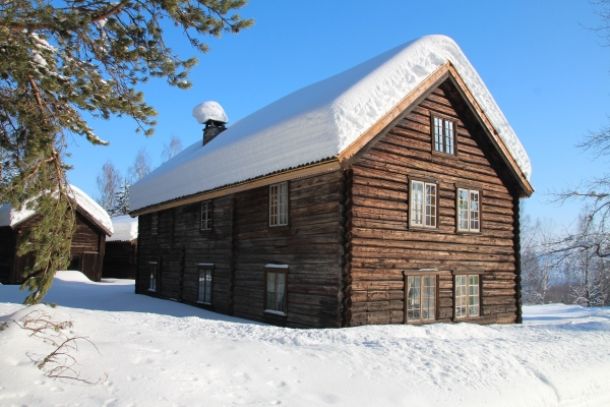Building a wooden house is more than constructing a shelter—it’s a personal journey that transforms raw timber into a warm, inviting home that reflects your personality and craftsmanship. “Handcrafting Your Dream Wooden House” is a guide designed for DIY enthusiasts who seek to infuse every corner of their home with a touch of artisanal skill and creativity. This article explores the steps involved in handcrafting a wooden house, from initial design concepts to the final finishing touches, emphasizing the value of traditional techniques blended with modern practices.
Introduction
For many, the dream of a wooden home is intertwined with the idea of working with natural materials and creating something truly unique. Handcrafting your dream wooden house is a labor of love that involves meticulous planning, skilled craftsmanship, and a commitment to quality. By embracing both traditional methods and modern innovations, you can build a home that not only meets your functional needs but also tells your personal story through its design and details.
Conceptualization and Design
Develop Your Vision:
The journey begins with a clear vision of what you want your home to represent. Start by sketching your ideas—consider the number of rooms, layout, and any unique features that capture your style. Reflect on how each space will function and how the natural beauty of wood can be highlighted.
Creating Detailed Plans:
Work with architects or utilize design software to create detailed blueprints. These plans should cover everything from the overall layout to the specifics of joinery and decorative elements. Detailed planning not only guides the construction process but also helps in obtaining necessary permits and managing the budget.
Incorporating Personal Touches:
One of the joys of handcrafted homes is the ability to customize. Consider incorporating bespoke elements such as custom cabinetry, handcrafted wood carvings, or personalized fixtures. Every choice adds a layer of individuality that makes your home truly one-of-a-kind.
Material Selection and Preparation
Choosing the Right Wood:
Select wood that not only meets structural requirements but also resonates with your aesthetic preferences. Options like cedar, pine, or reclaimed wood offer unique textures and natural resilience. Prioritize sustainable sources to ensure that your project contributes positively to the environment.
Proper Seasoning and Treatment:
For longevity, it’s crucial to use well-seasoned wood. Seasoned wood reduces the risk of shrinkage and cracking after construction. Additionally, treat the wood with natural preservatives or eco-friendly sealants to protect against moisture, pests, and UV damage without compromising the wood’s natural beauty.
Craftsmanship and Construction Techniques
Traditional Joinery Methods:
Embrace time-honored techniques such as mortise and tenon, dovetail, and saddle notches. These methods not only provide robust connections but also add an element of artistry to your home. Each joint tells a story of craftsmanship that modern fasteners can’t replicate.
Modern Tools and Hybrid Approaches:
While traditional methods are essential, integrating modern tools such as laser levels, digital measuring devices, and precision saws can improve accuracy and efficiency. The hybrid approach ensures that you maintain the charm of handcrafting while benefiting from technological advancements that reduce errors and material waste.
Step-by-Step Construction:
Begin with a solid foundation tailored to the natural environment. Carefully stack and interlock your logs or timber beams according to your design. Every stage—framing, insulation, roofing—should be executed with a focus on precision and durability. Handcrafting allows you to observe the natural variations in the wood, adjusting techniques as necessary to accommodate each piece’s unique characteristics.
Finishing Touches and Personalization
Natural Finishes:
Apply finishes that enhance the wood’s grain and character. Natural stains, oils, or low-VOC sealants provide protection while preserving the organic appearance. These finishes not only safeguard the structure but also create a warm and inviting atmosphere indoors.
Interior Detailing:
The interior of your handcrafted home should reflect the same care and artistry as the exterior. Consider elements like exposed beams, custom woodwork, and built-in furniture. Lighting, both natural and artificial, can accentuate the textures and colors of the wood, creating a harmonious living space.
Long-Term Maintenance and Legacy
Routine Upkeep:
A handcrafted wooden house requires regular maintenance to keep its charm intact. Periodically inspect the structure for signs of wear, moisture damage, or pest infestations. Reseal and refinish surfaces as needed to maintain protection and aesthetic appeal.
Building a Legacy:
Handcrafting your dream wooden house is not only about creating a home for today but also about leaving a legacy. The time, effort, and skill invested in each detail ensure that your home can be passed down through generations as a testament to your craftsmanship and personal vision.
Conclusion
Handcrafting your dream wooden house is an endeavor that blends art, tradition, and modern innovation. By meticulously planning every aspect, choosing the right materials, and employing both traditional and modern construction techniques, you create a home that is uniquely yours. This journey is as much about personal expression as it is about building a shelter—it’s about crafting a space that tells your story, celebrates nature, and stands as a lasting legacy. Embrace the challenge, enjoy the process, and take pride in every handcrafted detail that transforms raw wood into a dream home.


